Ancient China was home to many inventions, most of which we still use today in some form. The compass, silk and gunpowder, these are 3 of some of the most important inventions from China: the compass provided simple and easy navigational assistance, silk was a popular fabric that was sought after by neighbouring civilizations, (creating the infamous Silk Road) and gunpowder gave rise to new forms of weapons and explosives which changed the way combat was fought in the world. These inventions served to make China a powerful civilization in ancient times, making them important to the overall evolution of the world.
The Compass
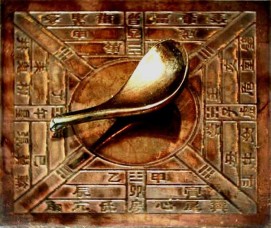 The compass was invented back in around 221 – 207 BCE during the Qin dynasty, but at the time it wasn’t made for physical navigation, rather it was used for spiritual navigation. It was a spoon shaped pointer made of loadstone or magnetite ore on top of a bronze plate. The handle of this spoon would always be pointing south, so this compass was known as a south pointer, and the plate itself had 24 directions based on the constellations, the 28 lunar mansions based on the constellations dividing the equator, and the 8 trigrams of the I Ching.[1] The square represented earth while the inner circle represented the heavens, and the spoon itself represented the constellation Ursa Major.
The compass was invented back in around 221 – 207 BCE during the Qin dynasty, but at the time it wasn’t made for physical navigation, rather it was used for spiritual navigation. It was a spoon shaped pointer made of loadstone or magnetite ore on top of a bronze plate. The handle of this spoon would always be pointing south, so this compass was known as a south pointer, and the plate itself had 24 directions based on the constellations, the 28 lunar mansions based on the constellations dividing the equator, and the 8 trigrams of the I Ching.[1] The square represented earth while the inner circle represented the heavens, and the spoon itself represented the constellation Ursa Major.
The ancient Chinese would use this compass to determine the place and time of burials, as well as locations for a business or a home. It was believed that if your home or business was placed in the right direction then you would have a good life, this is a practice known as Feng Shui.[2] This compass also saw some practical use as well, they would use it to find their way home, especially during harsh weather conditions that prevented sight. It wasn’t until around 960 CE – 1126 CE during the Northern Song dynasty where a smaller, slightly more advanced version of their compass was created. They magnetized an iron needle by rubbing it with magnetite, and then suspended it water. The compass took a more simplified form, making it more practical for navigation, and it was a vital tool for seafarers, as it prevented them from getting lost at sea.[3]
Other than it being a south pointer, there isn’t really much of a difference between their compasses and our compasses of today, their entire purpose since invention has been for navigation, and that hasn’t changed at all.
_________________________________
[1] Compass, China, 220 BCE. Susan Silverman. Accessed December 12, 2018. https://www.smith.edu/hsc/museum/ancient_inventions/compass2.html.
[2] Chinese Compass History: Invention, Dynasty and Navigation. Heather Thomas. Accessed December 12, 2018. https://www.learnchinesehistory.com/history-chinese-compass/.
[3] Compass, China, 220 BCE. Susan Silverman. Accessed December 12, 2018. https://www.smith.edu/hsc/museum/ancient_inventions/compass2.html.
Silk
 Silk has a long history in China, the first known records of it stretch back to 3630 BCE during the Neolithic period, and the first examples of woven silk is sometime after in 2700 BCE. Silk itself was produced by silkworms when they cocooned, and it became known as sericulture to raise and harvest these worms for silk.[4] Women were the ones who were usually in charge of this, along with the weaving of it. For a long
Silk has a long history in China, the first known records of it stretch back to 3630 BCE during the Neolithic period, and the first examples of woven silk is sometime after in 2700 BCE. Silk itself was produced by silkworms when they cocooned, and it became known as sericulture to raise and harvest these worms for silk.[4] Women were the ones who were usually in charge of this, along with the weaving of it. For a long 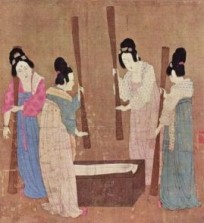 while however silk was a fabric limited to those of royalty, but that restriction began to dissipate as time went on, and the fabric became available to people who could afford it, because of this the silk industry grew, and so did the uses for it, it was used in the production of paper, fishing rods, bow strings, and musical instruments.[5] Silk even became a currency of sorts; there are documents from the era telling how farmers paid their taxes in silk, which would subsequently make the state pay in silk, creating a cycle.[6]
while however silk was a fabric limited to those of royalty, but that restriction began to dissipate as time went on, and the fabric became available to people who could afford it, because of this the silk industry grew, and so did the uses for it, it was used in the production of paper, fishing rods, bow strings, and musical instruments.[5] Silk even became a currency of sorts; there are documents from the era telling how farmers paid their taxes in silk, which would subsequently make the state pay in silk, creating a cycle.[6]
It wasn’t long until other civilizations desired this silk because of its rarity, and as such give the name to the large trade network known as the Silk Road. This large trade network connected East Asia to Europe, Africa, and India, which allowed the civilizations more interaction with each other and more opportunity for knowledge to be shared. Unfortunately for China, they weren’t able to keep a monopoly on silk forever, despite their efforts to keep it hidden, the knowledge of silk making was eventually leaked by Chinese migrants setting up shop in other civilizations, and so silk trade began to falter, not before China was able to profit marginally from it though.
Silk in present day still hasn’t lost its use, in fact it’s gained more uses, it’s still used as a fabric, but now it’s used for parachutes, bicycle tires, etc.
_________________________________
[4] Silk in Antiquity. Mark Cartwright. Last modified July 28, 2017. https://www.ancient.eu/Silk/.
[5] Silk history. Silk Road. Accessed Decmeber 14, 2018. http://www.silk-road.com/artl/silkhistory.shtml.
[6] Silk history
Gunpowder
 Gunpowder was discovered by Chinese alchemists around 850 CE by mixing 75 parts saltpeter, 15 parts charcoal, 10 parts sulfur, and heating it up over a flame; they were met with explosive results, which led to the place they’d been working at burning down.[7] This discovery was entirely an accident, and not even close to what they were trying to create. What they were actually trying to
Gunpowder was discovered by Chinese alchemists around 850 CE by mixing 75 parts saltpeter, 15 parts charcoal, 10 parts sulfur, and heating it up over a flame; they were met with explosive results, which led to the place they’d been working at burning down.[7] This discovery was entirely an accident, and not even close to what they were trying to create. What they were actually trying to  create was an elixir of immortality, which had been their goal since around 210 BCE (this goal of course, was never reached). However the thing they had accidently created turned out to be extremely useful, at first it was used for fireworks, but later on around as early as 904 CE they turned it into a weapon. They called it “flying fire”, an arrow with a burning tube of gunpowder attached to the shaft: in short, an explosive arrow. The ruling dynasty at the time: the song dynasty, utilized these arrows against the Mongols,[8] not only did they prove an effective weapon, but perhaps proved as an effective scare tactic as well, since China was the only one knew about gunpowder at the time. That was only the start though, their use of gunpowder evolved and gave us the first instance of something cannon-like: they stuffed a cannonball down a bamboo shoot and shot them out by lighting one end with gunpowder, they even tried to make the cannon into something more mobile with the hand cannon, but the design seemed to be too cumbersome, so it probably didn’t stick.
create was an elixir of immortality, which had been their goal since around 210 BCE (this goal of course, was never reached). However the thing they had accidently created turned out to be extremely useful, at first it was used for fireworks, but later on around as early as 904 CE they turned it into a weapon. They called it “flying fire”, an arrow with a burning tube of gunpowder attached to the shaft: in short, an explosive arrow. The ruling dynasty at the time: the song dynasty, utilized these arrows against the Mongols,[8] not only did they prove an effective weapon, but perhaps proved as an effective scare tactic as well, since China was the only one knew about gunpowder at the time. That was only the start though, their use of gunpowder evolved and gave us the first instance of something cannon-like: they stuffed a cannonball down a bamboo shoot and shot them out by lighting one end with gunpowder, they even tried to make the cannon into something more mobile with the hand cannon, but the design seemed to be too cumbersome, so it probably didn’t stick.
They weren’t able to keep the secret of gunpowder forever though, sometime during the 11th century the secret got out, (most likely through the Silk Road) and once it spread across the world, warfare was never the same again, other civilizations started adopting their own versions of the cannon, as well as inventing more uses for it as a weapon.[9] Even today, gunpowder’s most notable use is for warfare.
_________________________________
[7] The Invention of Gunpowder: A History. Kallie Szczepanski. Last modified April 23, 2018. https://www.thoughtco.com/invention-of-gunpowder-195160.
[8] History of Gunpowder: Gunpowder in ancient China. Karen Carr. Last modified June 7, 2017. https://quatr.us/china/gunpowder-ancient-china.htm.
[9] History of Gunpowder.
These 3 inventions changed the world, for better, or for worse, regardless they had an impact on not only China, but everyone around them as well. These inventions were part of the reason why ancient China prospered. The compass provided effective navigation, silk was a source of economic growth, and gunpowder became the basis for most weapons from then on. Imagine if they’d hadn’t stumbled across gunpowder, one the most impactful inventions, how different could the world have been?
Bibliography
Carr, Karen. 2017. History of Gunpowder: Gunpowder in ancient China. June 7. https://quatr.us/china/gunpowder-ancient-china.htm.
Cartwright, Mark. 2017. Silk in Antiquity. July 28. https://www.ancient.eu/Silk/.
Hays, Jeffrey. 2010. SILK IN CHINA. April. http://factsanddetails.com/china/cat9/sub63/item342.html.
Magnet Academy. 2014. Early Chinese Compass – 400 BC. December 10. https://nationalmaglab.org/education/magnet-academy/history-of-electricity-magnetism/museum/early-chinese-compass.
Silk Road. n.d. Silk history. Accessed December 14, 2018. http://www.silk-road.com/artl/silkhistory.shtml.
Silverman, Susan. n.d. Compass, China, 220 BCE. Accessed December 12, 2018. https://www.smith.edu/hsc/museum/ancient_inventions/compass2.html.
Szczepanski, Kallie. 2018. The Invention of Gunpowder: A History. April 23. https://www.thoughtco.com/invention-of-gunpowder-195160.
Thomas, Heather. n.d. Chinese Compass History: Invention, Dynasty and Navigation. Accessed December 12, 2018. https://www.learnchinesehistory.com/history-chinese-compass/.
Images
http://www.ancientpages.com/2016/03/18/magnetic-compass-was-invented-in-ancient-china/
https://www.ducksters.com/history/china/legend_of_silk.php
http://onlinesciencenotes.com/sericulture-life-cycle-silkworm/
https://quatr.us/china/gunpowder-ancient-china.htm
https://jackkellygunpowder.weebly.com/the-importance-of-gunpowder.html
 attempted to heat the mixture over an open flame and the result surprised us more than it hurt us, there was an instant release of smoke and flames, our hands and faces were burned and the entire building ended up burning down. We managed to escape the building and were promptly taken in for treatment for our burns, in the end we survived, but we were still flabbergasted at what we made and why that happened, we wanted to recreate and experiment with it, if it’s able to produce fire and smoke in an instant, perhaps it might be of use? If we were to handle that mixture again though we’d have to be prepared, it seems to be particularly dangerous.
attempted to heat the mixture over an open flame and the result surprised us more than it hurt us, there was an instant release of smoke and flames, our hands and faces were burned and the entire building ended up burning down. We managed to escape the building and were promptly taken in for treatment for our burns, in the end we survived, but we were still flabbergasted at what we made and why that happened, we wanted to recreate and experiment with it, if it’s able to produce fire and smoke in an instant, perhaps it might be of use? If we were to handle that mixture again though we’d have to be prepared, it seems to be particularly dangerous.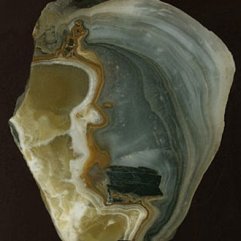 A stalagmite found in Wanxiang Cave in the Gansu Province of Northwest China provides evidence that climate change had an effect on ancient China, in the forms of drought and weakened rain. It seems these periods of weakened rain and drought coincide with the fall of some dynasties in ancient China, starting with the Tang dynasty in the 9th century.
A stalagmite found in Wanxiang Cave in the Gansu Province of Northwest China provides evidence that climate change had an effect on ancient China, in the forms of drought and weakened rain. It seems these periods of weakened rain and drought coincide with the fall of some dynasties in ancient China, starting with the Tang dynasty in the 9th century.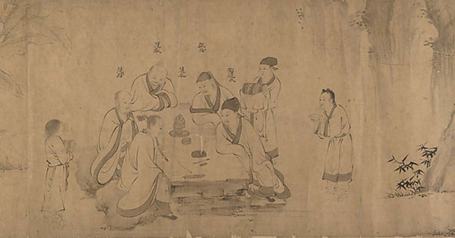
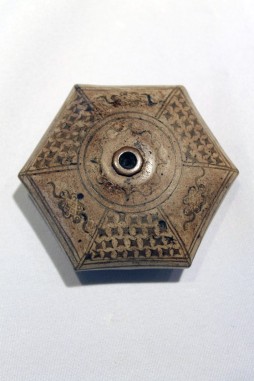 This is an Opium pipe that was used in ancient China.
This is an Opium pipe that was used in ancient China.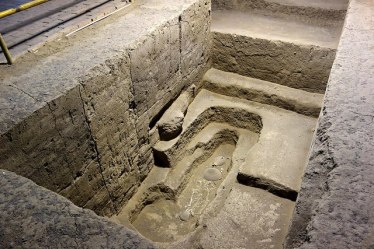 Ghosts of deceased people were also believed to be real, so they made sure to give them a comfortable burial as well as clean their resting spots, so their ghosts wouldn’t come back to haunt them. Divination was also a practice they performed; a mystic would commune with an ancestor to foretell the future. Overall ancient Chinese people had strong religious beliefs that occupied some of their daily lifestyle.
Ghosts of deceased people were also believed to be real, so they made sure to give them a comfortable burial as well as clean their resting spots, so their ghosts wouldn’t come back to haunt them. Divination was also a practice they performed; a mystic would commune with an ancestor to foretell the future. Overall ancient Chinese people had strong religious beliefs that occupied some of their daily lifestyle.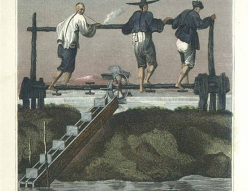

 Archaeology sounds like a fun career choice, you get to explore and/or investigate ancient artifacts, but I’d say it’s not for me. It just doesn’t interest me, although a part I think would enjoy about archaeology would be finding what links certain artifacts to certain events in the past. Now if I was an archaeologist, the civilization I would most likely focus on would be ancient Egypt, the mysterious pyramids draw me in.
Archaeology sounds like a fun career choice, you get to explore and/or investigate ancient artifacts, but I’d say it’s not for me. It just doesn’t interest me, although a part I think would enjoy about archaeology would be finding what links certain artifacts to certain events in the past. Now if I was an archaeologist, the civilization I would most likely focus on would be ancient Egypt, the mysterious pyramids draw me in. An example of an artifact would be the tomb of Tutankhamun (the boy king), it was discovered by Howard Carter and his small team. Inside said tomb was the mask belonging to the boy king.
An example of an artifact would be the tomb of Tutankhamun (the boy king), it was discovered by Howard Carter and his small team. Inside said tomb was the mask belonging to the boy king.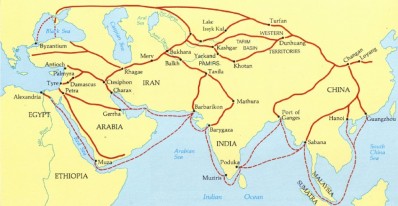
 The Yellow river played a heavy role with Ancient China’s agriculture and transportation, it was home to a lot of rich, fertile soil and irrigation water, as well as easy transportation among the cities, it was the sixth longest river in the world after all. All was not good however, “
The Yellow river played a heavy role with Ancient China’s agriculture and transportation, it was home to a lot of rich, fertile soil and irrigation water, as well as easy transportation among the cities, it was the sixth longest river in the world after all. All was not good however, “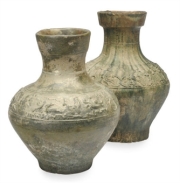 Pottery was one of China’s major art forms, and possibly the oldest. Its been found that it dates back to 17,000 to 18,000 years ago.⁴
Pottery was one of China’s major art forms, and possibly the oldest. Its been found that it dates back to 17,000 to 18,000 years ago.⁴